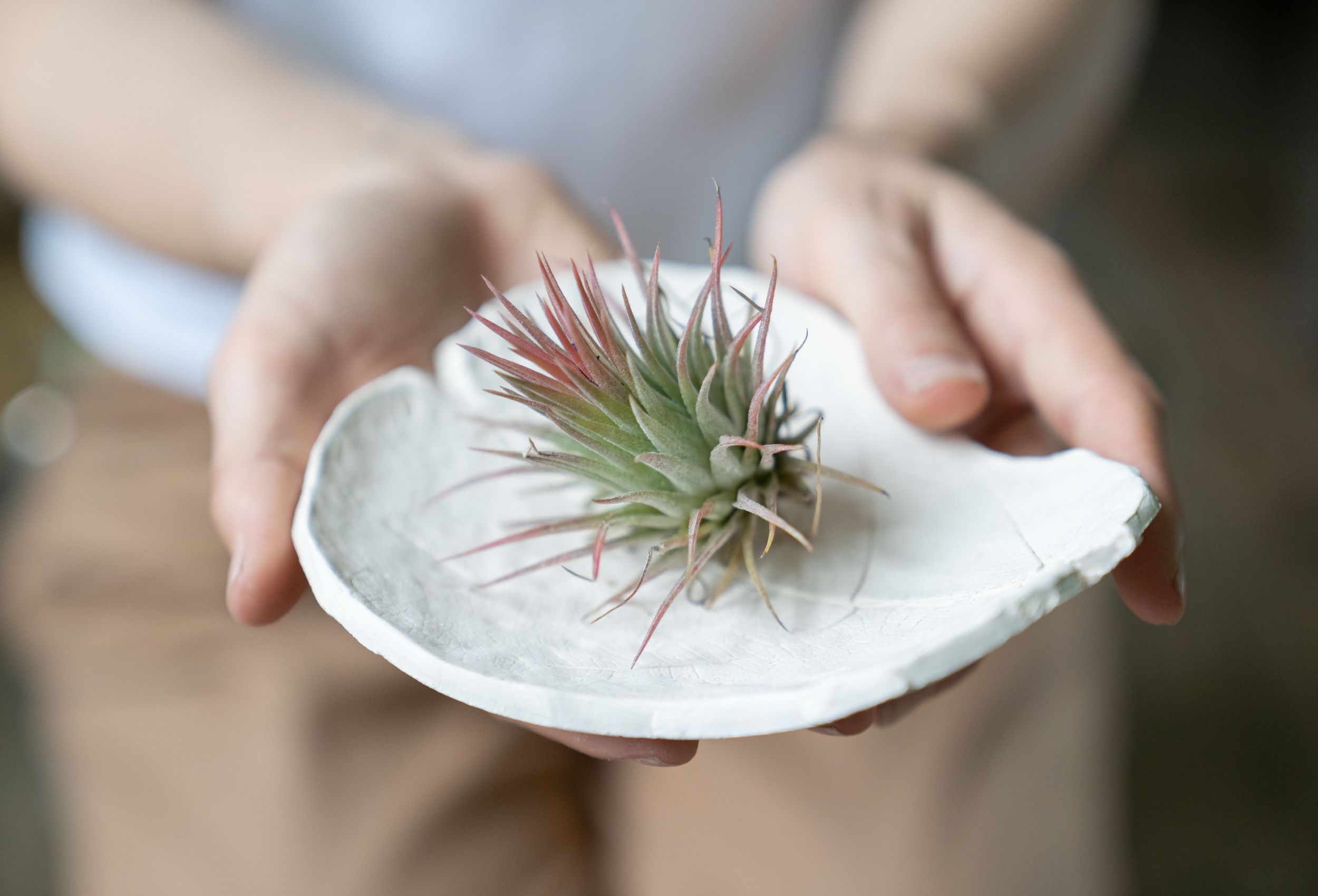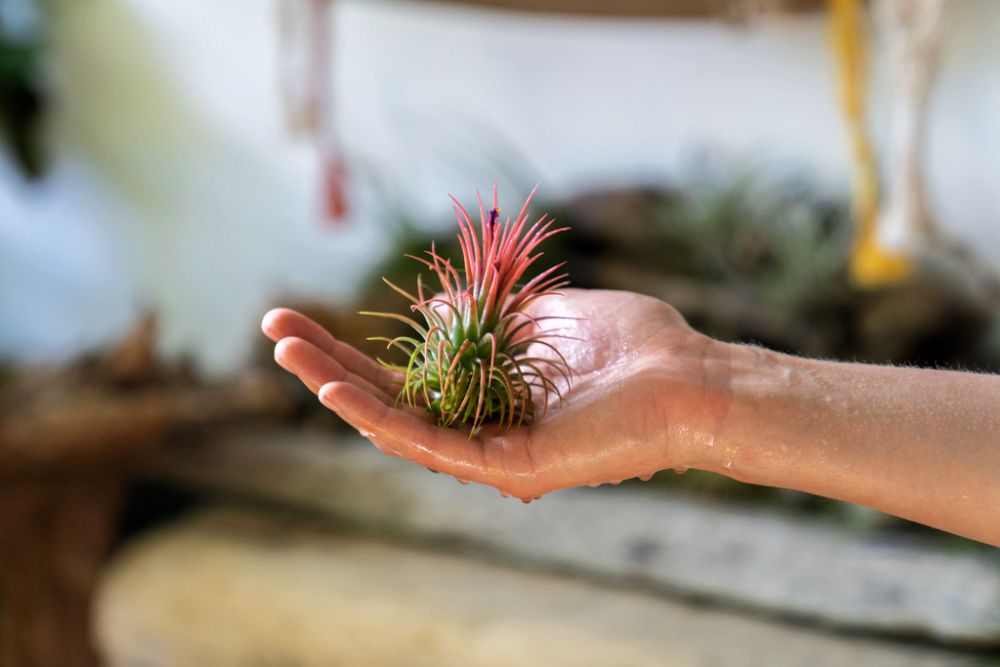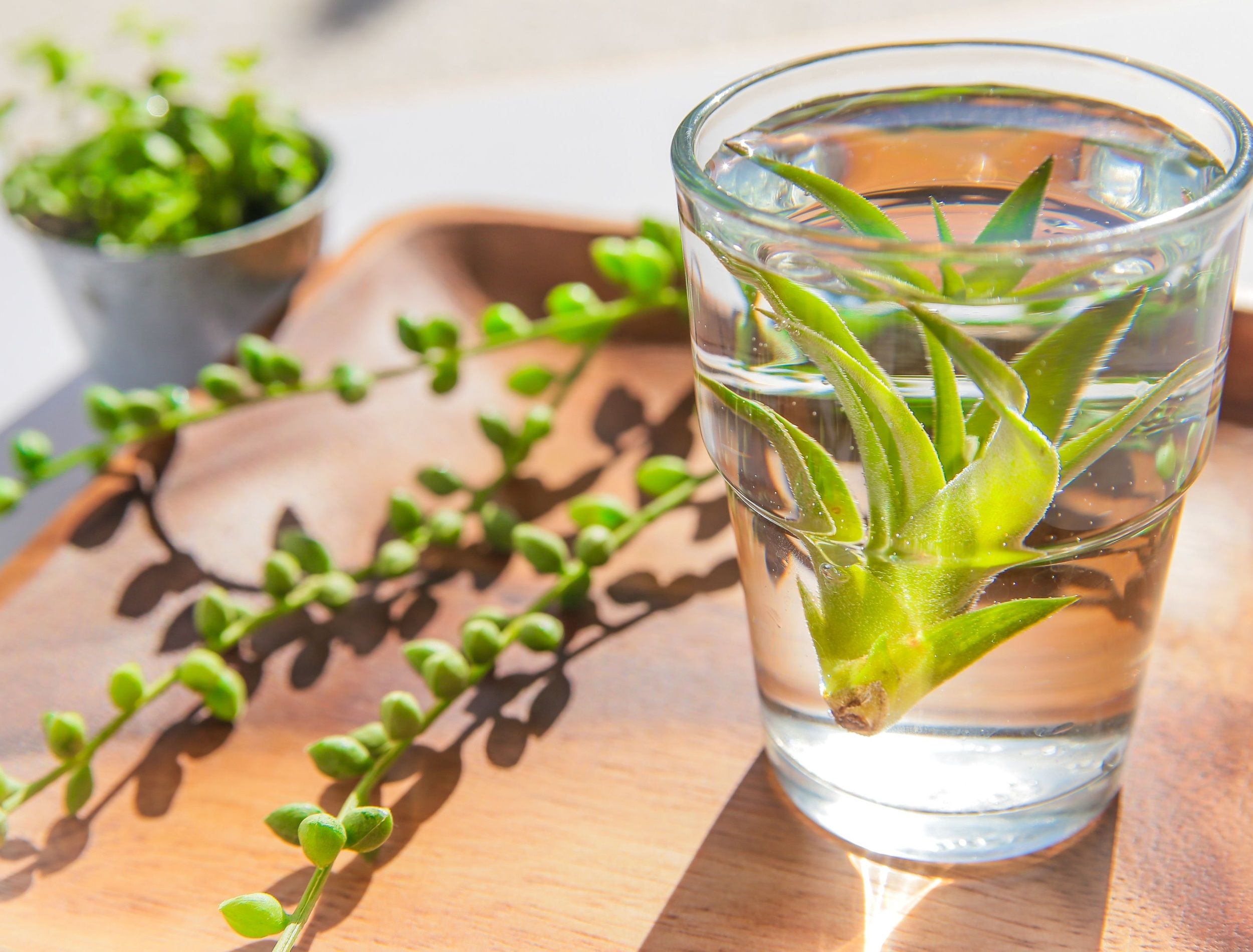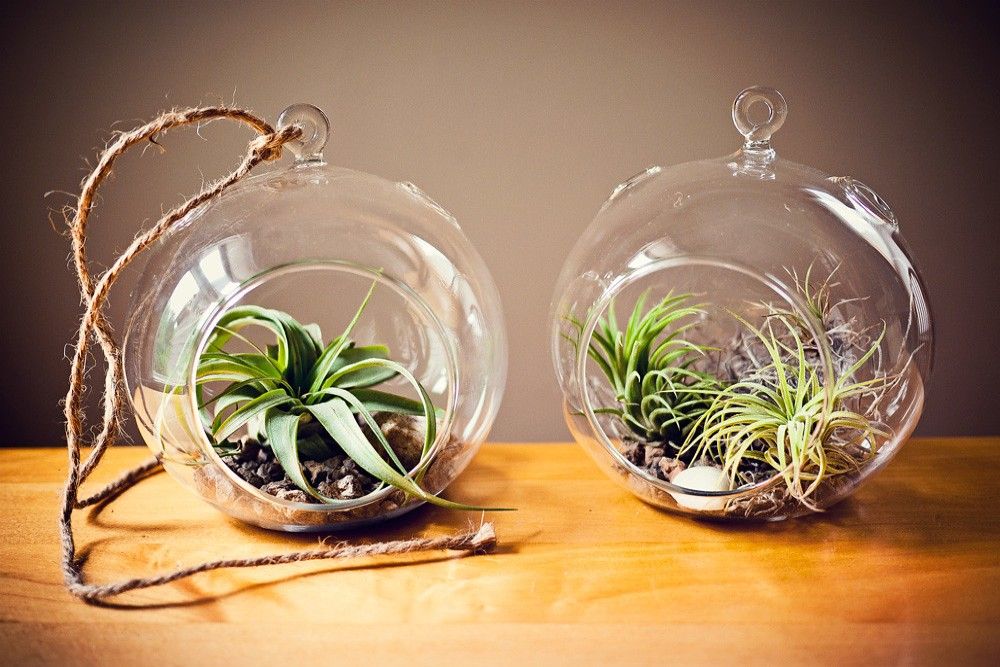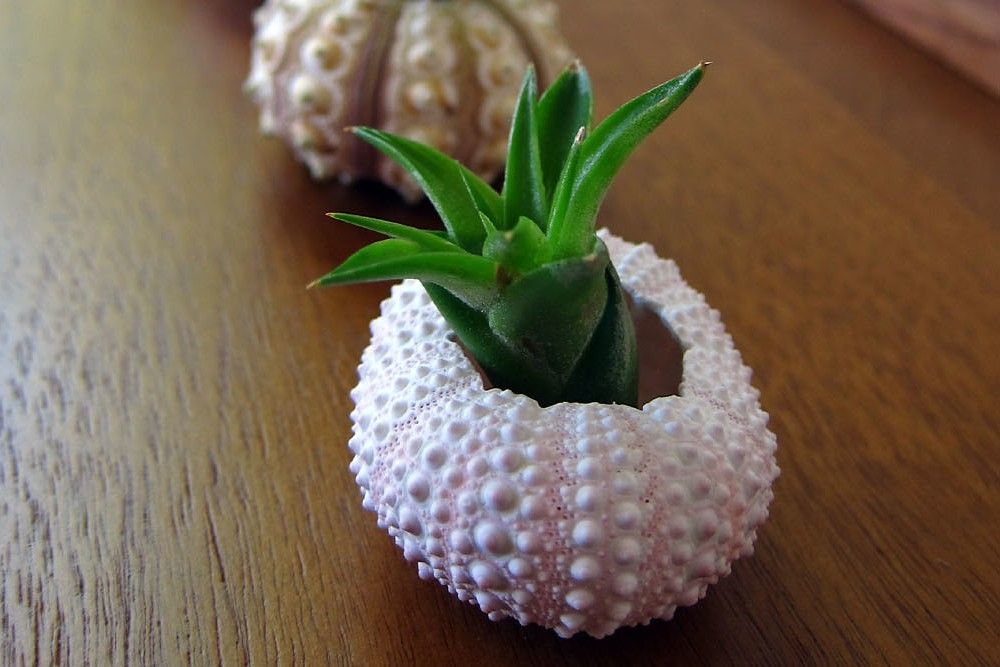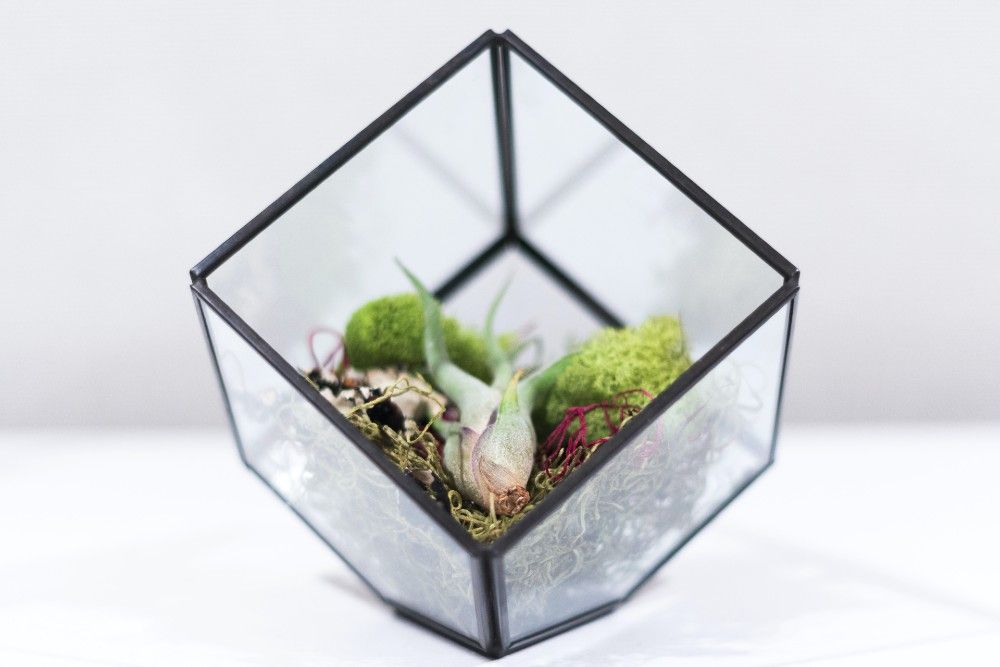The air plant, also known as Tillandsia, is an eye-catching species of houseplant that is popular for its lack of roots-in-soil structure. But sometimes, air plants don't behave the way they're expected.
Are you mystified by your air plant turning brown? Don't worry, you're not alone! It's a common issue for many first-time growers, but understanding why it's happening is the key to preventing future problems.
Learn about the most likely reasons your air plant might be discoloring as well as a summary of air plant care basics. With these practical solutions, you can keep your air plants happy and vibrant for years to come.
Over or Underwatering
Image credits: DimaBerlin via DimaBerlin
If your air plant is turning brown, it could be because it's not getting enough water. Air plants don't need much H2O to stay healthy and hydrated, but do require regular watering to thrive. Without enough water, the leaves dry out and turn brown -- which can eventually lead to death if not taken care of properly.
Fortunately, giving your air plant a deep soak for about 20 minutes once or twice a week is an easy way to make sure it stays hydrated. If you want to mist your air plant instead, that's totally fine! Note that it's a more frequent task than soaking.
Just monitor the color of the leaves, and if they look limp or droopy, it's probably time for a drink.
Overwatering is also one of the most common mistakes when caring for an air plant and can have serious consequences. Too much water causes roots to rot and leaves to discolor and dry out. If possible, use filtered or distilled water instead of tap water, as the minerals in tap water can build up on the outer layer of the leaves over time.
Rotting
Image credits: patchii via Shutterstock
One potential culprit of browning leaves could be rotting due to water collecting at the base of your air plant's leaves or stem. To prevent this, when watering your air plant, do not leave it submerged for too long!
Once you finish soaking it, shake off excess water. If there is any standing water left behind, turn the plant upside down to dry. These measures help ensure your air plant stays healthy and green by preventing rot.
Poor Air Circulation
Image credits: CieraHolzenthal via Creative Commons
When it comes to air plants, poor air circulation can be a real issue if left unchecked. Poor airflow can have a detrimental effect on their health and well-being, causing browning leaves and slow growth.
To keep your air plant in tip-top condition, place them in an area with good ventilation. Avoid containers without openings, as they can trap moisture and eventually suffocate the roots of your precious companion. Instead, opt for hanging baskets or holders that allow plenty of fresh air to reach the plant's foliage.
Overheating
Image credits: mr. rollers via Creative Commons
In some cases, browning is usually a sign that the plant has been exposed to too much sunlight and heat under glass, leading to burnt foliage. Don't worry though -- there are a few simple steps you can take to get your air plant looking healthy again.
Make sure the area around your plant is well-shaded with plenty of indirect light. You should also aim to increase the relative humidity around the plants. Misting regularly or placing a humidifier in the room can help.
A Guide for Caring for Your Air Plant
Image credits: Conner Betts via Unsplash
If your air plant is showing signs of distress, here's a step-by-step guide for taking care of it.
Light
During the growing season (April to October), place your air plant in bright, filtered sunlight. Too much direct sun can burn the plant, so avoid leaving it in strong, direct sunlight during this time.
After October, you can gradually increase your air plant's exposure to more direct sunlight. However, keep an eye out for signs of discoloration or wilting. These could be indications that your plant is getting too much direct sun.
Food
If your air plant is looking a bit lackluster, it might just need some fertilizer! Fertilizing air plants is not mandatory and you can still have healthy happy plants without it. However, if you want to give the extra benefit of fertilization, you'll need to know what kind of fertilizer works best for them.
A bromeliad fertilizer (or an acidic fertilizer at quarter strength,) applied with a sprayer twice a month or with lower concentrations every time you water your plant. Avoid fertilizers with copper, boron, or zinc, which could damage your air plants.
Temperature
Air plants are happiest when temperatures range between 65 to 90 degrees Fahrenheit during the day and 50 to 65 degrees Fahrenheit at night. So, if you're looking for optimal air plant health and growth, keep your plants in an area of your home that maintains these temperatures year-round.
In Summary
Air plants are delicate creatures that require some effort to keep alive. However, by understanding the needs of your air plant and giving it the proper care, you can nurse it back to health in no time. By following this guide, you can make sure that your air plant has access to everything it needs, including water, light, and airflow.
With a little love and attention, your plant will be back to its vibrant self in no time! Have you had success reviving an air plant? Leave a comment below and share your story!

